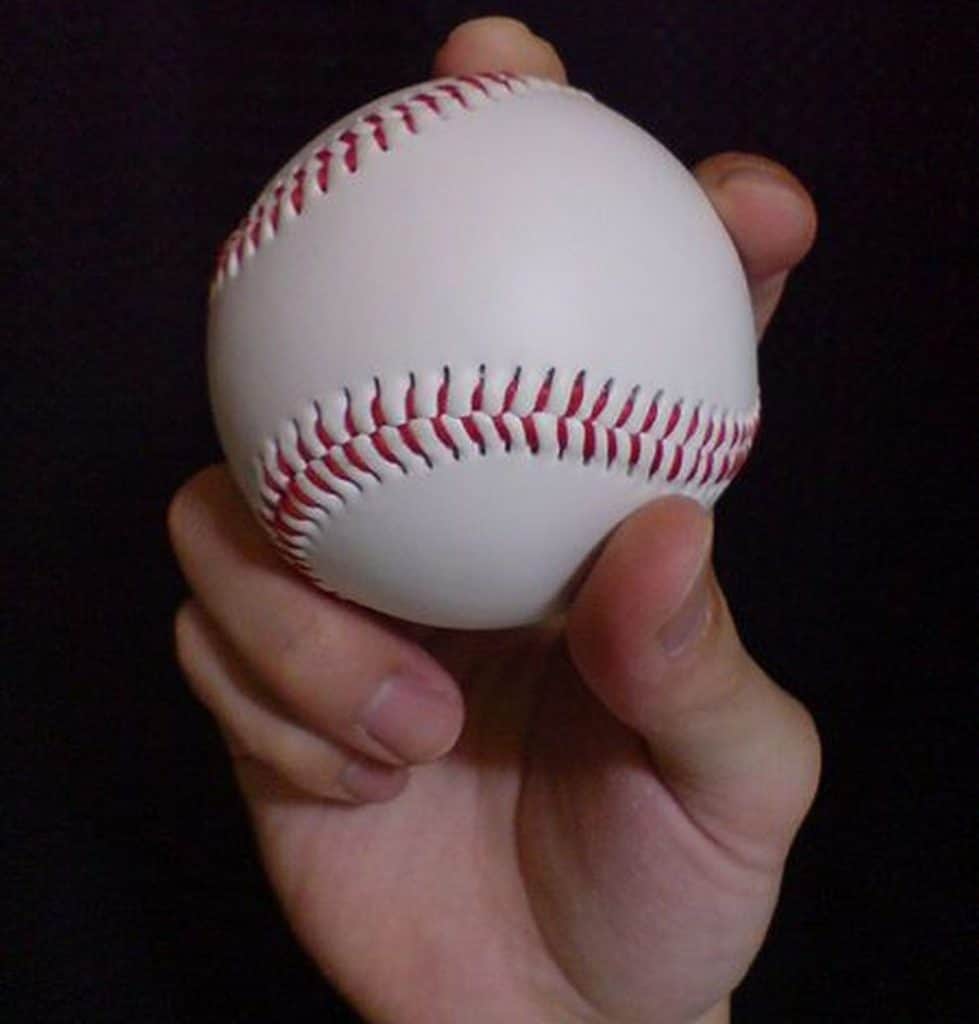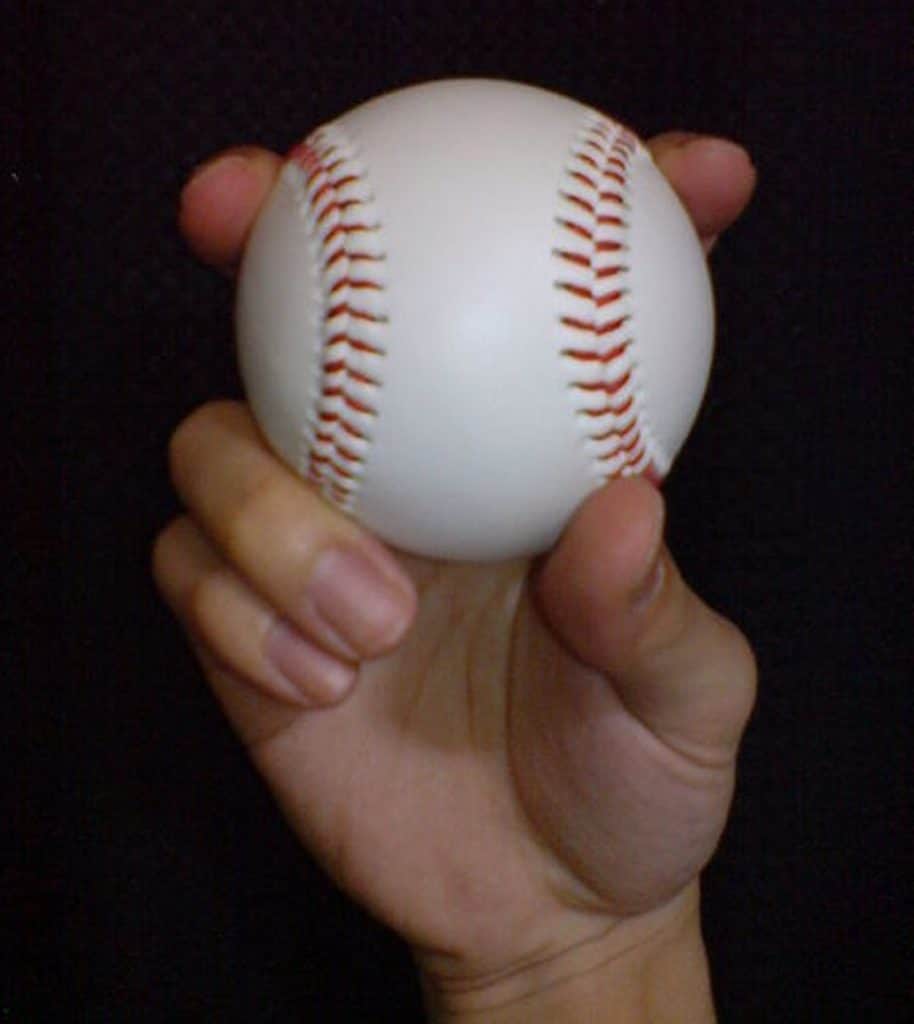Sinker vs Splitter – A Detailed Comparison
A pitcher’s ability to reach into his bag of tricks and surprise the batter is often the difference between winning and losing.
Most pitchers have three basic pitches in their arsenal – fastball, curveball, and changeup.
The “Big Three” are the first pitches players learn.
However, it’s what comes after those three that makes pitchers truly scary for the hitters.
When it comes to more complex pitches, the two of the most devastating are sinker and splitter.
Both of them are very deceptive and are a great way to catch the batter of balance.
To batters, they initially look like the straight fastballs, before dropping and seemingly disappearing right in front of them.
However, when observing sinker vs splitter next to each other, their movement before getting to the home plate differs.
I’ll take a closer look at these advanced pitches to see what makes them so special and feared.
Table of Contents
What is a Sinker?
The sinker’s main characteristic is the sinking movement as the ball approaches the batter. After all, that’s how this pitch got its name.
The dive that these pitches take right in front of the home plate usually results in a ground ball or a swing-and-miss.
This is because the ball trajectory tricks the batter into thinking he can hit the ball when in most cases he whiffs or barely touches it.
Sinkers are sometimes considered to be a type of 2-seam fastball but it has more of a vertical drop.
Batters do often think that fastball is coming their way and set the timing for a fastball swing.
In fact, the sinker drops an additional 6 to 9 inches compared to the traditional fastball. It also flies a bit slower and has less lateral movement.
Still, sinkers are pretty fast and fly only 2-3 mph slower than the 4-seam fastball.
How to Throw a Sinker?

Sinkers are thrown much like the traditional 2-seam fastballs. The grip and the pitcher’s stance when throwing the ball are rather similar.
Still, while the 2-seam fastball requires the pitcher to throw the inside of the baseball to get the side spin, with sinkers, he also needs to stay on top of the baseball to create sinking movement and the drop.
The ball is gripped by placing the index finger over the closest seam and putting the middle finger next to it.
The thumb should be on the bottom of the ball and lined up with the index finger.
The grip needs to be rather tight to prevent the ball from going wild and provide more friction and air resistance.
At the release, the palm should be twisted to the right to make the ball sink. Of course, lefties should twist their palm to the left.
What is a Splitter?
The splitter is an off-speed pitch, widely considered to be one of the most dangerous in the game.
This pitch can be seen as an evolution of forkball, another off-speed pitch, now very rare among the pros.
It’s often called split-finger fastball but doesn’t feature as much velocity as the traditional fastball and is more of a breaking pitch.
The splitter often incites swing-and-misses due to change in speed as the ball fleas and the sudden downward movement as it reaches the home plate.
The speed of the splitter is somewhere between the fastball and the changeup, typically clocking at 80-90 miles per hour.
As it reaches the batter, the ball starts in the zone before dropping straight to the ground.
A lot of pitchers use it as a strikeout pitch, as batters have a tendency to chase a splitter because they initially seem like a fastball.
How to Throw a Splitter?

The splitter owes its name to the grip it uses. The fingers are split by the baseball and spread around its surface.
Fingers top the ball and are placed in a way that their inside is on the outside of the baseball.
The ball is gripped between the middle and index finger this way but they are not supposed to be too spread as it may decrease the command of the throw.
Still, the grip itself shouldn’t be too tight.
When throwing the splitter, the pitcher should use minimal wrist action. However, the forearm and the hand are trusted downward.
This and, along with the wide grip, is important because it decreases the spin rate. This causes the ball to fly at lower velocity but allows it to drop due to gravity.
Depending on the pitcher, the splitter can be thrown harder or softer to play the role of a changeup.
Sinker vs Splitter – What are the Differences?
Comparing sinker vs splitter is like comparing two close relatives.
Both pitches are initially similar and look like the fastball, but further down the road towards the home plate, their differences become more obvious.
Pitchers put more side spin in the sinker than on the splitter or the typical fastball. This results in a trajectory that is both downwards and to the arm side.
For splitter, on the other hand, pitchers use much less spin and the ball moves only downwards.
Another difference in movement is that the sinker features a more gradual curve downwards, while the splitter acts more like a breaking pitch and suddenly drops.
Both pitches are hurled at high velocity, with the splitter slightly slower of the two. The grip is pretty similar and starts with the classic 2-seam fastball fingers position.
Nevertheless, for the splitter, the fingers are further spread apart.
Conclusion
Sinkers and splitters present a valuable addition to the throwing arsenal of every pro pitcher. Still, they are not easy to learn and inexperienced players may have issues mastering them.
Most coaches recommend that young players first achieve command of a fastball and change up before moving on to these two pitches.
Splitters are not even recommended for youth players as they can put a lot of tension to the elbow, possibly hindering physical development at a younger age.
But, when mastered, both sinkers and splitters are tricky pitches that strike fear at most batters no matter the level of competition.




